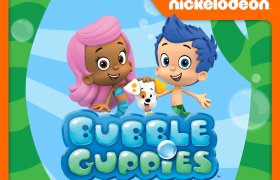Communicating with a Non Verbal Child

Speech doesn’t come easy for some children and there are different types of high and low tech tools and strategies to help them get their message across. People in your child’s life want to understand how they can develop the language skills in nonverbal children and teenagers. There is good news because research has created many effective strategies. First, you have to realize that each child is unique and one strategy isn’t necessarily going to work with every child. Every child can learn how to communicate but it might not be through a language you understand. By using assistive technology and other kinds of support, these children can also benefit society and live their lives to the fullest. Here is a guide of 7 strategies for promoting language development with nonverbal children:
Stimulate interaction
The best and most effective way a child can learn new things, including language is through play. In the playing process, there is a lot of communication which is an excellent opportunity for them to practice. There are tons of games you can play to encourage social interactions and speaking, for example, you can buy a karaoke machine and have contests in singing with your child. Whatever you choose to do, always try to communicate with them while looking them in the eyes and stay near to them so they can hear you.
Imitation
Young children learn mostly from mimicking their parent’s and sibling’s behavior. So when you are playing with them, try to mimic their behavior so they can copy you afterward. Always try to focus on the good behavior, for example, if they dress their doll, do it too, but if they want to throw the doll, don’t repeat it after them so they can learn that it is bad.
 Nonverbal communication
Nonverbal communication
Facial expressions and body language are very important indicators for language. Maintain eye contact with them at all times, and try showing them different gestures while you speak. For example, you can go to a public pool and splash around in the water. Tell your child this is a swimming pool where everyone has fun. Your child might be scared at first, but most kids that are nonverbal love water and soon your child will be splashing around with you. At first, focus on teaching them all the simple gestures that are used in everyday life and ones that are very simple like clapping their hands for applause, or nodding the head for yes and no.
Let them take their time
Being patient is one of the most important traits a parent must learn. Even with children that are verbal, parents sometimes don’t let them finish some sentences because they know what they’re going to say and don’t have the time. With nonverbal children, it is especially important to wait and let them take their time. They might know what they want, they just need a little more time to remember how to ask for it. Always pay attention to their movements and be patient.
Use simple language
When you make your language simple, it helps your child to pay attention to what you’re talking about while understanding it easier. They can try and mimic your speech that way. Use single words if your child is nonverbal. For example, if your child takes a toy car say “car” and then say “drive car”. Keep using one word and add a few more words to create a simple phrase. This also helps your nonverbal child to learn how to put two words together.
Pay attention to your kid’s interests
When your child is finally focused on something, try not to interrupt it. If he decides to pick up a toy for himself, say the name of the toy out loud, but never get angry because you were showing him something different at the moment. Sometimes you should let them guide you in the learning process. When you choose the right words while your child is engaging in a project, you are helping them learn the vocabulary associated with the project.
 Try assistive technology
Try assistive technology
Assistive technologies along with vision boards and visual supports can help a lot in the process. This technology can help fasten the child’s development. There are a lot of different devices and apps with pictures for the producing of words. Some simple supports exist too, like pictures that a child can use to express his feelings.
When you have a nonverbal child it’s best to begin working with a variety of therapists that are can help you and your child select and use the various strategies that encourage language development. Don’t be afraid to talk to the therapists and tell them about the successes and difficulties you and your child both have experienced. Working along with a team, you can help support your child’s needs to discover their unique voice. You can also find a support group of parents of children that are nonverbal and work with each other to learn the different techniques that they use. You can find out about their successes and difficulties with trying to get their child to communicate. The world of a nonverbal child can be frustrating at times for both the parents and the child. There are also some online support chat rooms that you can discuss your concerns with other parents as well.







